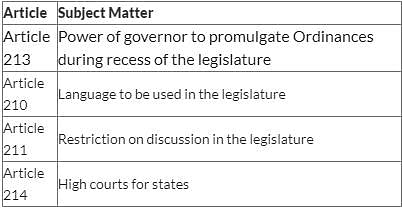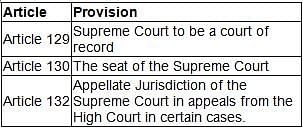UGC NET Exam > UGC NET Tests > Test: Indian Constitution - UGC NET MCQ
Test: Indian Constitution - UGC NET MCQ
Test Description
10 Questions MCQ Test - Test: Indian Constitution
Test: Indian Constitution for UGC NET 2024 is part of UGC NET preparation. The Test: Indian Constitution questions and answers have been prepared
according to the UGC NET exam syllabus.The Test: Indian Constitution MCQs are made for UGC NET 2024 Exam.
Find important definitions, questions, notes, meanings, examples, exercises, MCQs and online tests for Test: Indian Constitution below.
Solutions of Test: Indian Constitution questions in English are available as part of our course for UGC NET & Test: Indian Constitution solutions in
Hindi for UGC NET course.
Download more important topics, notes, lectures and mock test series for UGC NET Exam by signing up for free. Attempt Test: Indian Constitution | 10 questions in 12 minutes | Mock test for UGC NET preparation | Free important questions MCQ to study for UGC NET Exam | Download free PDF with solutions
Detailed Solution for Test: Indian Constitution - Question 1
Test: Indian Constitution - Question 2
Which article of the Indian constitution provides the provision of Vidhan Parishad in the state?
Detailed Solution for Test: Indian Constitution - Question 2
| 1 Crore+ students have signed up on EduRev. Have you? Download the App |
Test: Indian Constitution - Question 3
Which Amendment of the Indian Constitution added Part IX to the Indian Constitution?
Detailed Solution for Test: Indian Constitution - Question 3
Detailed Solution for Test: Indian Constitution - Question 4
Test: Indian Constitution - Question 5
Which of the following articles of Indian Constitution mentions the ordinance making power of the Governor?
Detailed Solution for Test: Indian Constitution - Question 5
Test: Indian Constitution - Question 6
Which Article of the Indian Constitution defines the Original Jurisdiction of the Supreme Court?
Detailed Solution for Test: Indian Constitution - Question 6
Test: Indian Constitution - Question 7
Third schedule of Indian constitution includes provision for?
Detailed Solution for Test: Indian Constitution - Question 7
Test: Indian Constitution - Question 8
Article 325 of Indian constitution includes provision for?
Detailed Solution for Test: Indian Constitution - Question 8
Test: Indian Constitution - Question 9
The right of minorities that ensures the protection of their language, script and culture.
Detailed Solution for Test: Indian Constitution - Question 9
Detailed Solution for Test: Indian Constitution - Question 10
Information about Test: Indian Constitution Page
In this test you can find the Exam questions for Test: Indian Constitution solved & explained in the simplest way possible.
Besides giving Questions and answers for Test: Indian Constitution, EduRev gives you an ample number of Online tests for practice
Download as PDF



















